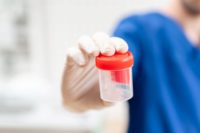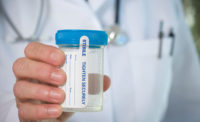 The percentage of positive drug tests among American workers has increased for the first time in more than a decade, fueled by a rise in marijuana and amphetamines, according to an analysis of 8.5 million urine, oral fluid and hair workplace drug test results by Quest Diagnostics.
The percentage of positive drug tests among American workers has increased for the first time in more than a decade, fueled by a rise in marijuana and amphetamines, according to an analysis of 8.5 million urine, oral fluid and hair workplace drug test results by Quest Diagnostics.
The positivity rate for 7.6 million urine drug tests in the combined U.S. workforce increased to 3.7 percent in 2013, compared to 3.5 percent in 2012. The relative increase of 5.7 percent year-over-year is the first time the positivity rate for combined national workplace urine drug tests has increased since 2003.
"After years of declines, the prevalence of positive workforce drug tests is increasing," said Dr. Barry Sample, director, science and technology, Quest Diagnostics Employer Solutions, a business of Quest Diagnostics. "This increase indicates that employers should be aware of the potential for drug use by their workers and the risk that represents for the health and safety of their employees and the public."
Test results are analyzed according to three categories of workers: employees with private companies (U.S. general workforce); employees subject to federal drug testing rules, including safety-sensitive truck drivers, train operators, airline and nuclear power plant workers (federally mandated safety-sensitive workers); and a combination of both groups (combined U.S. workforce).
Colorado and Washington lead the increase
Marijuana continues to be the most commonly detected illicit drug, according to urine drug tests. Marijuana positivity in the combined U.S. workforce increased 6.2 percent, to 1.7 percent in 2013 compared to 1.6 percent in 2012. In the safety-sensitive workforce, marijuana positivity increased 5.6 percent (0.67% vs. 0.63%). In the general U.S. workforce, the positivity rate increased 5 percent, to 2.1 percent in 2013 compared to 2.0 percent in the prior year. These increased positivity rates are consistent with findings from the 2012 National Survey on Drug Use and Health (NSDUH), which showed an increase in self-reported past-month marijuana use between 2007 and 2012.
An analysis of urine drug test data for the combined U.S. workforce from the two states with "recreational" use laws – Colorado and Washington – showed marijuana positivity rates increased 20 and 23 percent, respectively, in the general workforce between 2012 and 2013, compared to the 5 percent average increase among the U.S. general workforce in all fifty states. However, both Colorado and Washington experienced dramatic increases in marijuana positivity rates prior to legalization at the end of 2012. From 2009 to 2010, Colorado experienced a 22 percent increase and Washington a 10 percent decline in positivity. From 2011 to 2012, Colorado experienced a 3 percent increase and Washington an 8 percent increase in positivity.
"Washington and Colorado are believed by many to foreshadow future trends in 'recreational' marijuana use. While Quest's Drug Testing Index shows dramatic spikes in marijuana positivity rates over the past year, a longer view of the data suggests a more complex picture," said Dr. Sample. "It is possible that relaxed societal views of marijuana use in those two states, relative to others, may in part be responsible for the recent increase in positivity rates. Yet, this doesn't explain why both states also experienced steep rises – and declines – in positivity in recent years. We will be very interested to see how our data evolves over the next year or two in these two states relative to those that have not legalized so-called 'recreational' marijuana.
"What we do know is that workforce positivity for marijuana is definitely on the rise across the United States. It is important for people to remember that while some states have legalized marijuana, the federal government has not. Employers generally have the authority to restrict the 'recreational' use of marijuana by employees and impose sanctions, including termination, on employees with positive drug tests in all 50 states.”
Methamphetamine use up as well
Continuing a multi-year upward trend, amphetamines use – specifically the use of methamphetamine – showed an increase across all three specimen types. Combined U.S. workforce data in urine showed a 10 percent (0.85% vs. 0.77%) year-over-year increase in amphetamines positivity in 2013 compared to 2012. In the U.S. general workforce, methamphetamine positivity in urine drug tests increased 27 percent (0.14% vs. 0.11%); oral fluid methamphetamine positivity increased by 50 percent (0.24% vs. 0.16%). In addition, the positivity rate in hair testing jumped by 55 percent (1.2% vs. 0.77%). Amphetamines positivity rates are now at their highest levels on record and methamphetamine positivity rates are at their highest levels since 2007, across all specimen types.
Amphetamines are a class of central nervous system stimulants that includes methamphetamine (best known for being produced in clandestine labs) and prescription medications for conditions such as ADHD and narcolepsy.
Oxycodone use down
Prescription opiates refer to drugs used for pain management, such as hydrocodone and oxycodones, showed a decrease in positivity in urine drug tests.. The current data shows oxycodones positivity declined 8.3 percent (0.88% vs. 0.96%) between 2013 and 2012 and 12.7 percent (0.96% vs. 1.1%) between 2012 and 2011 in the combined U.S. workforce. Four states experienced double-digit declines in oxycodones positivity rates in both 2013 and 2012: Florida, Massachusetts, New Jersey and Ohio. Hydrocodone positivity remained at 1.3 percent between 2012 and 2013.
For more information about the Quest Diagnostics Drug Testing Index used for the analysis, visit www.QuestDiagnostics.com/DTI.
Quest Diagnostics, a leading provider of diagnostic information services, has analyzed annual workplace drug testing data since 1988.



